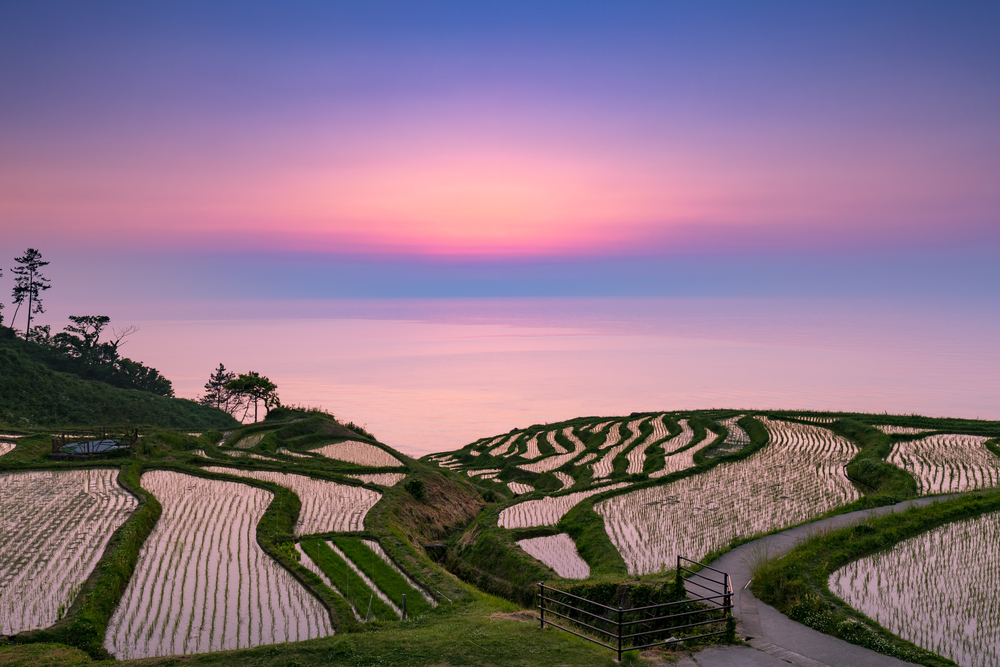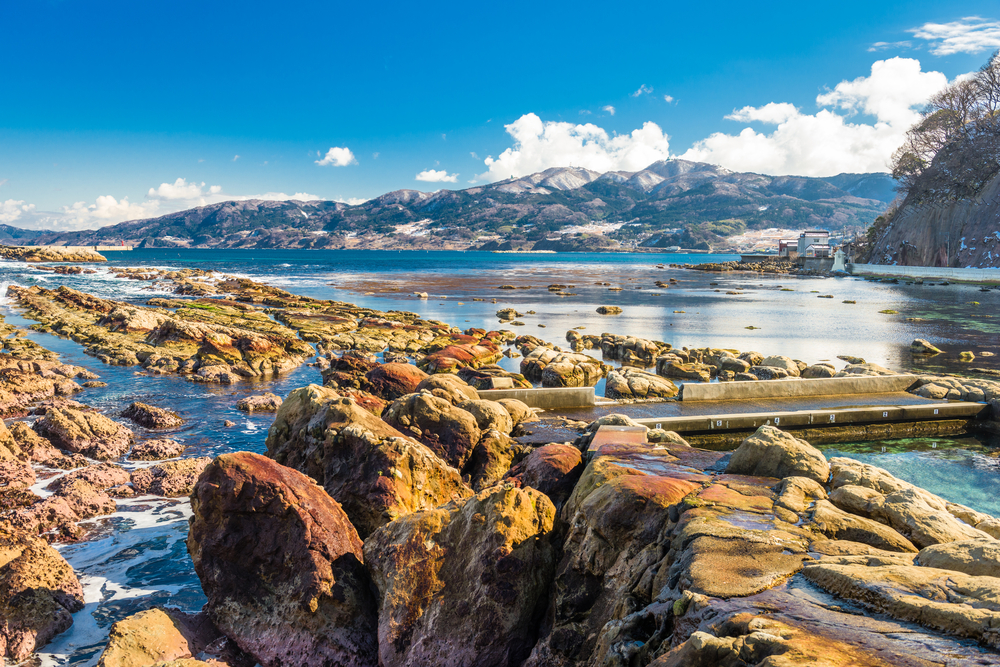Wajima and the surroundings in the Noto peninsula
At the extreme west of Japan, in Ishikawa prefecture, extend for kilometers the largest peninsula in the country, the Noto peninsula. Far from crowded places, the Wajima area gives you the opportunity to discover in a perfect serenity among the most beautiful japan’s countryside places.
You could start your little adventure visiting the astonished rice fields of Shiroyone Senmaida about 10 kilometers from the city of Wajima. Facing the ocean, over thousand small plots of rices fields gently grow surrounded by a breathtaking landscape. Every season of the year is conducive to the discovery of this place, covered in winter by snow, or offering one of the most beautiful sunsets that can be seen in Japan during spring and summer.The Owners of these beautiful rice fields illuminate the place in a wide range of colors at nightfall to the delight of passers-by venturing into this lost corner of Japan. (Illuminations visible from October to March). The quality of this rice is also due to work of the farmers, who must plant everything and pick everything by hand, in the narrow fields on which grows these crops. The quality of the rice is due to this unique location but also to the work of the farmers, who by the difficult and narrow terrain on which grow these crops, must plant everything and pick everything by hand.

 The city of Wajima, is a good location to stay, more lively than the rest of the region, it is particularly appreciated for its morning market near the harbor offering local specialties, and an incredible variety of fish and seafood. There is also a beautiful museum of traditional art, the Ishikawa Ken Wajimashitsugei Museum. The city is also famous for craftsmanship related to Nuri, the Japanese lacquer used in the process of making chopsticks, bowls and other accessories of traditional craftsmanship. The Nuri comes from the Urushi tree, abundant in Ishikawa prefecture and used for this art for centuries.
The city of Wajima, is a good location to stay, more lively than the rest of the region, it is particularly appreciated for its morning market near the harbor offering local specialties, and an incredible variety of fish and seafood. There is also a beautiful museum of traditional art, the Ishikawa Ken Wajimashitsugei Museum. The city is also famous for craftsmanship related to Nuri, the Japanese lacquer used in the process of making chopsticks, bowls and other accessories of traditional craftsmanship. The Nuri comes from the Urushi tree, abundant in Ishikawa prefecture and used for this art for centuries.
